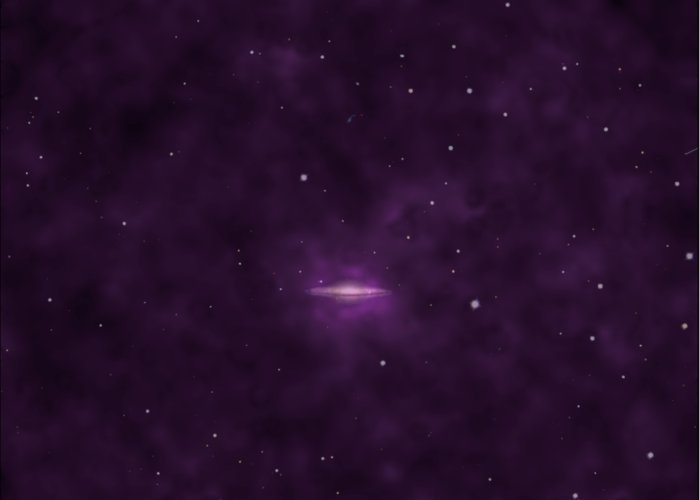Quest To Find ‘Missing’ Matter – Where Is It?
Astronomers using ESA’s XMM-Newton space observatory have probed the gas-filled haloes around galaxies in a quest to find ‘missing’ matter thought to reside there, but have come up empty-handed – so where is it?
All the matter in the Universe exists in the form of ‘normal’ matter or the notoriously elusive and invisible dark matter, with the latter around six times more prolific.

This image illustrates the X-ray emission around a set of five galaxies that have been stacked together to bring out the details in their spherical, gaseous haloes. It was created by a team of scientists using ESA’s XMM-Newton space observatory, with the X-ray emission highlighted in purple. ESA/XMM-Newton; J-T. Li (University of Michigan, USA); Sloan Digital Sky Survey (SDSS)
Curiously, scientists studying nearby galaxies in recent years have found them to contain three times less normal matter than expected, with our own Milky Way Galaxy containing less than half the expected amount.
“This has long been a mystery, and scientists have spent a lot of effort searching for this missing matter,” says Jiangtao Li of the University of Michigan, USA, and lead author of a new paper.
“Why is it not in galaxies — or is it there, but we are just not seeing it? If it’s not there, where is it? It is important we solve this puzzle, as it is one of the most uncertain parts of our models of both the early Universe and of how galaxies form.”
Rather than lying within the main bulk of the galaxy, the part can be observed optically, researchers thought it may instead lie within a region of hot gas that stretches further out into space to form a galaxy’s halo.
These hot, spherical haloes have been detected before, but the region is so faint that it is difficult to observe in detail – its X-ray emission can become lost and indistinguishable from background radiation. Often, scientists observe a small distance into this region and extrapolate their findings but this can result in unclear and varying results.
Jiangtao and colleagues wanted to measure the hot gas out to larger distances using ESA’s XMM-Newton X-ray space observatory. They looked at six similar spiral galaxies and combined the data to create one galaxy with their average properties.
“By doing this, the galaxy’s signal becomes stronger and the X-ray background becomes better behaved,” adds co-author Joel Bregman, also of the University of Michigan. “We were then able to see the X-ray emission to about three times further out than if observing a single galaxy, which made our extrapolation more accurate and reliable.”



 Creators of mankind
Creators of mankind Description of “Tall white aliens”
Description of “Tall white aliens” Where they came from?
Where they came from? About hostile civilizations
About hostile civilizations The war for the Earth
The war for the Earth “Tall white aliens” about eternal life
“Tall white aliens” about eternal life Video: “Nordic aliens”
Video: “Nordic aliens” Aliens
Aliens Alien encounters
Alien encounters The aliens base
The aliens base UFO
UFO Technology UFO
Technology UFO Underground civilization
Underground civilization Ancient alien artifacts
Ancient alien artifacts Military and UFO
Military and UFO Mysteries and hypotheses
Mysteries and hypotheses Scientific facts
Scientific facts


















